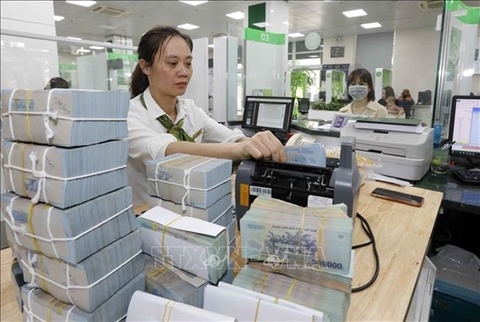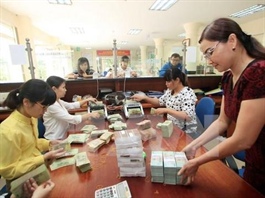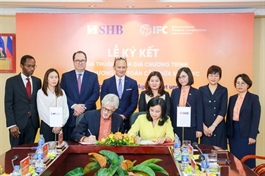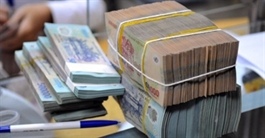New policy on tightening use of short-term capital for long-term loans takes effect
New policy on tightening use of short-term capital for long-term loans takes effect
From this week, a regulation from the State Bank of Vietnam (SBV) has come into effect, decreasing the ratio of short-term capital used for medium- and long-term loans from 34 per cent to 30 per cent.

A member of staff at a Vietcombank office in the northern province of Vĩnh Phúc. The new policy is necessary for ensuring liquidity and stabilising the banking system. — VNA/VNS Photo |
As stipulated in Circular 08/2020/TT-NHNN, both Vietnamese banks and foreign bank branches in Việt Nam are required to reduce the maximum ratio of short-term capital for medium and long-term loans to 30 per cent as of October 1, 2023.
Experts view the change as necessary to ensure liquidity and stabilise the banking system, as the implementation of the new regulation aims to prevent liquidity risks, stabilise banking operations and drive sustainable economic growth.
According to finance expert Đinh Trọng Thịnh, this move is to ensure capital safety at commercial banks and ensure lending conditions in accordance with international practices.
Utilising short-term capital for medium and long-term loans presents numerous risks. When short-term capital matures but the long-term loan hasn't been on due date, it can strain the bank's liquidity and adversely impact the operations of the banking system, according to Thịnh's analysis.
Thịnh said that there's a need to incrementally lessen the economy's reliance on commercial banks' medium- and long-term capital. Instead, it should explore other avenues in the capital market, such as bonds.
Data from the SBV showed 88 per cent of capital at banks comes from deposits with tenors of less than 12 months. Meanwhile, 52 per cent of the banking system’s outstanding loans are mid- and long-term loans.
However, there are also concerns that the new circular will increase pressure on the operations of the banking system and firms with large capital needs.
The HCM City Real Estate Association (HOREA) has recently sent an urgent proposal on extending the new policy for 12 months to the Prime Minister and the SBV. HOREA expects the extension will create conditions for banks to appropriately use short-term mobilised capital for medium- and long-term loans.
Lê Hoàng Châu, chairman of HOREA, stated that both the economy and the real estate market are grappling with challenges due to various headwinds. Many companies across different sectors have had to reduce their production and business activities, thus reducing their need for bank credit. On the other hand, numerous real estate companies still require bank loans, yet accessing such capital has been challenging for them. A primary reason for this is that many real estate and commercial housing projects are encountering legal issues.
Châu explained that while real estate companies have procured and planned land for development projects, they haven't yet received the Government's nod for detailed planning of these projects. Banks, on the other hand, are only willing to finance projects that possess detailed planning.
Therefore, HOREA expects banks to lend to real estate firms whose investment projects are feasible or whose secured assets are land use right certificates.
Commenting on the new circular, in a recent analysis report, KB Securities Vietnam Company (KBSV) said the reduction of banks' ratios will have certain effects on banks.
According to KBSV's analysts, in the short term, lowering the ratio of short-term capital for medium and long-term loans will slow down the process of reducing long-term lending interest rates of banks in the context that the country is needing support for economic growth. At the same time, the new circular will also partly put pressure on banks' long-term mobilisation needs, increasing banks' capital costs, causing pressure to narrow net interest margins (NIM).
However, in the long term, the analysts believe with the policy of healthy credit activities and ensuring liquidity for the banking system, the application of new regulations is expected to help banks better control liquidity risks and stabilise operations in the face of changes at home and abroad, while promoting sustainable economic development.
KBSV commented that the new circular is part of the motivation for banks to buy back bonds before maturity and focus on issuing long-term bonds in the near future, in addition to the motivation coming from the reduced interest rate level.
The latest data from the SBV showed as of July 2023, the ratio of short-term capital used to make medium- and long-term loans of the entire banking system was 26.14 per cent, of which the ratio of State-run commercial banks and joint-stock commercial banks was 24.97 and 33.66 per cent, respectively.
Notably, a few banks, such as Vietcombank and HDBank, have a ratio below 10 per cent, so they are not affected by this new policy.























